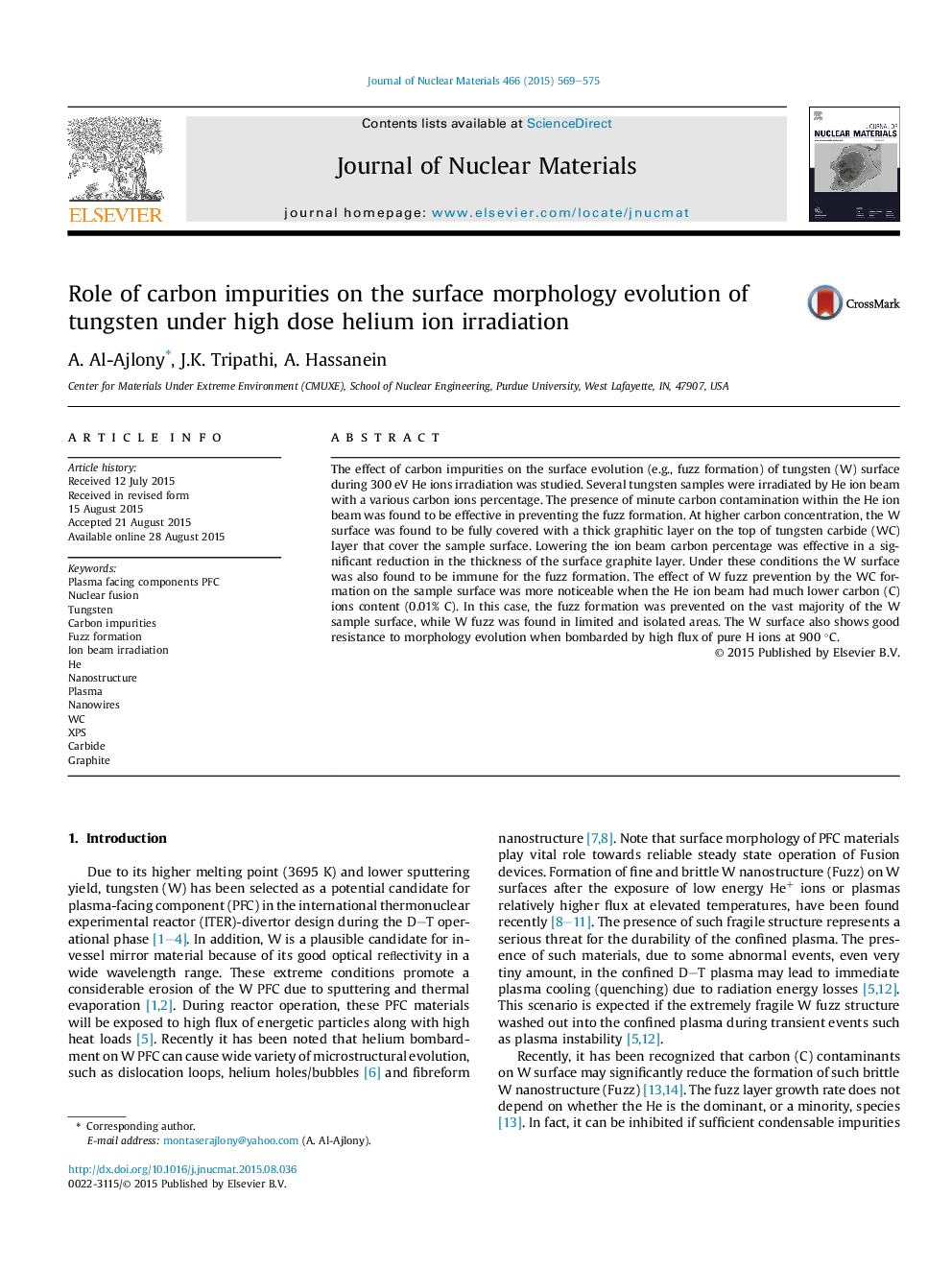| Article ID | Journal | Published Year | Pages | File Type |
|---|---|---|---|---|
| 7965031 | Journal of Nuclear Materials | 2015 | 7 Pages |
Abstract
The effect of carbon impurities on the surface evolution (e.g., fuzz formation) of tungsten (W) surface during 300 eV He ions irradiation was studied. Several tungsten samples were irradiated by He ion beam with a various carbon ions percentage. The presence of minute carbon contamination within the He ion beam was found to be effective in preventing the fuzz formation. At higher carbon concentration, the W surface was found to be fully covered with a thick graphitic layer on the top of tungsten carbide (WC) layer that cover the sample surface. Lowering the ion beam carbon percentage was effective in a significant reduction in the thickness of the surface graphite layer. Under these conditions the W surface was also found to be immune for the fuzz formation. The effect of W fuzz prevention by the WC formation on the sample surface was more noticeable when the He ion beam had much lower carbon (C) ions content (0.01% C). In this case, the fuzz formation was prevented on the vast majority of the W sample surface, while W fuzz was found in limited and isolated areas. The W surface also shows good resistance to morphology evolution when bombarded by high flux of pure H ions at 900 °C.
Keywords
Related Topics
Physical Sciences and Engineering
Energy
Nuclear Energy and Engineering
Authors
A. Al-Ajlony, J.K. Tripathi, A. Hassanein,
